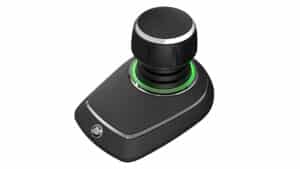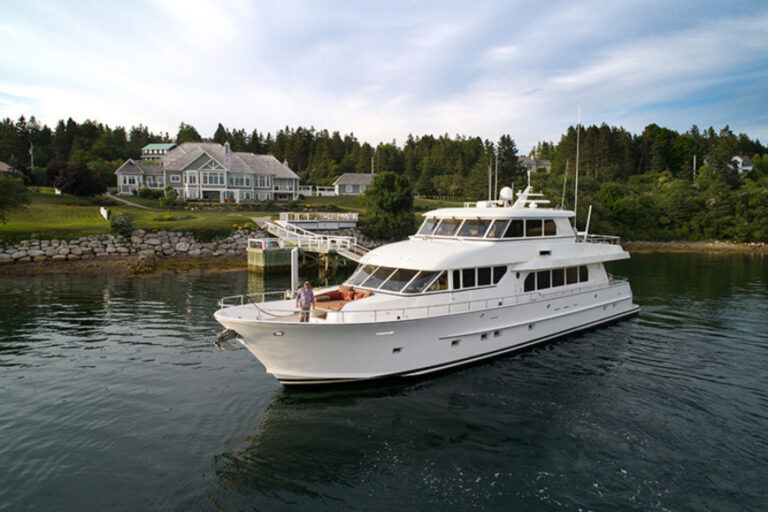Getting on friendly terms with an unfamiliar radar takes as much, if not more, time than you need to attain a similar relationship with your boat. I spent about an hour on a sunny day aboard a friend’s Wilbur 34 Sedan learning his Furuno 821/841 MKII is a fine unit. A stormy night would have been better for a field test, but….
This unit is as close as you can get to a perfect size for a variety of installations. The radar’s mounting bracket has a footprint of approximately 11 inches by 5 inches; its flush-mount cutout measures 8.7 inches by 9.3 inches. On the Wilbur, the set is mounted on top of the dash, a little to the left of the helm. Reaching the keypad and cursor control from the wheel is easy, and the keys are large enough and spaced well enough to be good targets. The same goes for the cursor control.
After the magnetron warms up, you press the standby TX key to transmit. Operation from here is fairly intuitive; plus or minus on the range key adjusts the range. Pressing the Brill key lets you toggle through the eight levels of the LCD’s backlighting. Maximum brilliance in daylight makes the display unreadable. The tone key combined with east and west arrows on the cursor control adjusts the display’s 32 levels of contrast. The keys work well, but I would prefer a simple rheostat knob.
Adjusting the keypad’s backlighting requires five steps, which seems foolish, but the operator’s manual is solid. A rheostat knob would be wonderful here, too, but knobs are a lot more difficult than keys to make waterproof.
Operating the variable range marker (VRM) and the electronic bearing lines (EBL) is child’s play. Pressing the VRM key displays the marker ring. Manipulating the cursor pad links the cursor to the marker ring, so when you move the cursor to the target, the ring follows. Place the ring on the inside edge of the target to measure the range and bearing to it. The VRM readout appears in the bottom left corner of the screen. Pressing and holding the key for about three seconds erases the VRM.
You can measure the target’s bearing with the cursor by placing the intersection of the cursor over the target. The readout appears in the lower right corner of the display. You may also use the EBL. Press the EBL key to display the dashed electronic bearing line. When you press the cursor pad, you link the EBL with the cursor, so placing the cursor over the target also places the EBL. The bearing appears in the box at the lower left of the screen, and the range appears in the opposite box. To reduce the bearing errors to a minimum, Furuno recommends keeping the echoes in the outer half of the picture by changing the range scale. The angular difference becomes difficult to resolve as the target gets closer to the center of the display.
All the Furuno radars I’ve used give clear target echoes, but on the smaller screens, such as this 8-inch diagonal LCD, the data displays can be difficult to see for sight-corrected users. This is not the fault of the display’s quality, simply one drawback of its size.
In bright light under a three-quarter enclosed bridge deck, the semi-transparent yellow mode display doesn’t show well. Bob Basché, the yacht’s owner, said the display wrecked his night vision, no matter how he adjusted the brightness. Those were his only gripes.
The street price of 800 series radar is about $2,000 for the 821 and about $2,800 for the 841MKII.
Contact: Furuno USA, (360) 834-9300; www.furunousa.com.









